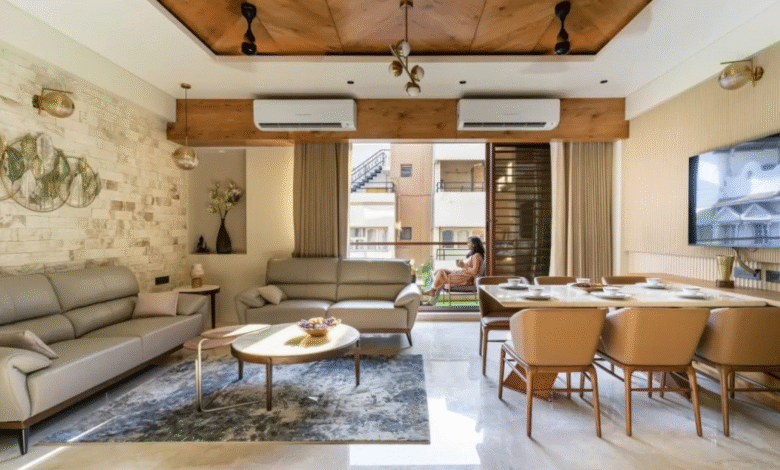Spaces That Feel Like Home: The Human Side of Interior Design in Minneapolis

A house can look picture-perfect on paper, but the real magic happens when it begins to feel like home. That’s where design steps in—not just design in the glossy-magazine sense, but design that understands how people actually live, breathe, and gather in their spaces. It’s never just about pretty things; it’s about creating rooms that echo with warmth, function, and a bit of personality that’s uniquely yours.
Where Guidance Meets Personality
Redesigning a space can feel overwhelming. Between scrolling through endless Pinterest boards, comparing paint samples, and second-guessing furniture layouts, the process can leave even the most enthusiastic homeowner exhausted. That’s where having a Local home decor consultant Minneapolis changes the game. Working with someone who knows the city, the quirks of older houses, and the modern vibe of new builds gives you an advantage. They understand that design isn’t one-size-fits-all—it’s rooted in the lifestyle and needs of the people who call that house home.
A Shift From Pretty to Practical
One of the most refreshing parts of today’s interior design movement is the shift toward blending beauty with practicality. No longer is it enough for a room to simply look good; it has to serve a purpose. A living room should invite conversation, a kitchen should flow naturally when you’re cooking, and a bedroom should offer rest without distractions.
This is where Professional interior planners MN bring their skill sets into play. They see things beyond color palettes and trendy finishes. They notice how the space works—or doesn’t work—for the people living in it. They create layouts that make sense, add lighting where it’s needed most, and balance style with usability.
Collaboration Over Dictation
The best design processes are collaborative. A designer who listens—really listens—will ask about your routines, frustrations, and dreams for the space. Do you host big family dinners? Do you need quiet corners for working from home? Do you have kids who treat the living room like a playground? These details matter more than following a trend report.
Good designers don’t walk in with a rigid plan; they shape ideas around the client’s reality. The result isn’t a showroom that feels stiff, but a home that feels authentic and personal.
Minneapolis: A City of Variety
Part of what makes Minneapolis exciting for design is its range of architecture. You have charming historic homes with original woodwork, sleek new townhouses with clean lines, and everything in between. This variety means designers often need to blend old and new, respecting a home’s character while making it livable for modern life. It’s a balancing act, but when done well, it makes a space feel both timeless and contemporary.
Avoiding the Stress Spiral
Tackling design projects solo often means running into roadblocks: furniture that doesn’t fit, colors that look different under your home’s lighting, shipping delays, or budgets spiraling out of control. Many homeowners find themselves stuck halfway through a remodel, surrounded by boxes and second thoughts.
Having professional guidance cuts through that chaos. Designers not only bring vision but also handle logistics, contractor communication, and those countless small details that can otherwise feel like a mountain. It turns what could be a stressful experience into an enjoyable, creative journey.
The Value of “Full Service”
Some firms go beyond consulting to provide what’s often called full-service design—taking the project from first sketch to final installation. That means you’re not juggling a dozen different vendors or worrying about missed details. Instead, you’re working with a team that manages the entire puzzle.
This is the kind of approach Julian Inc. full service has built a reputation around. By covering everything from planning and sourcing to installation, they remove the heavy lifting from homeowners. You still get the fun parts—the vision boards, the swatches, the big reveal—but without the overwhelm that usually comes with tackling a project on your own.
Emotional Impact of Everyday Details
Never underestimate the emotional effect of design. A thoughtfully placed reading nook can encourage you to actually take a break. A dining space with the right lighting invites longer meals and deeper conversations. A streamlined home office can boost productivity. These are small shifts that ripple through your daily life.
Design isn’t superficial—it has a real, lived-in impact.
Breaking Away From “Perfect”
Something else worth mentioning: homes don’t need to look like catalog spreads to feel beautiful. In fact, perfection can make spaces feel intimidating or sterile. The best homes carry signs of life—a throw blanket casually draped, a shelf of books slightly out of order, a kitchen counter that shows it’s been well-loved. Designers who get this don’t aim for flawlessness. They aim for spaces that breathe with real life.
Wrapping It All Together
Interior design in Minneapolis is more than picking paint colors or adding a trendy sofa. It’s about shaping environments that support the way you live. With the right guidance, whether through a consultant, planner, or full-service firm, you can transform overwhelming decisions into a process that feels engaging and even fun.
And in the end, it’s not just about style points—it’s about walking through your front door and thinking, “This feels right.”
Because when your home works with you, instead of against you, every moment inside becomes just a little bit better.




